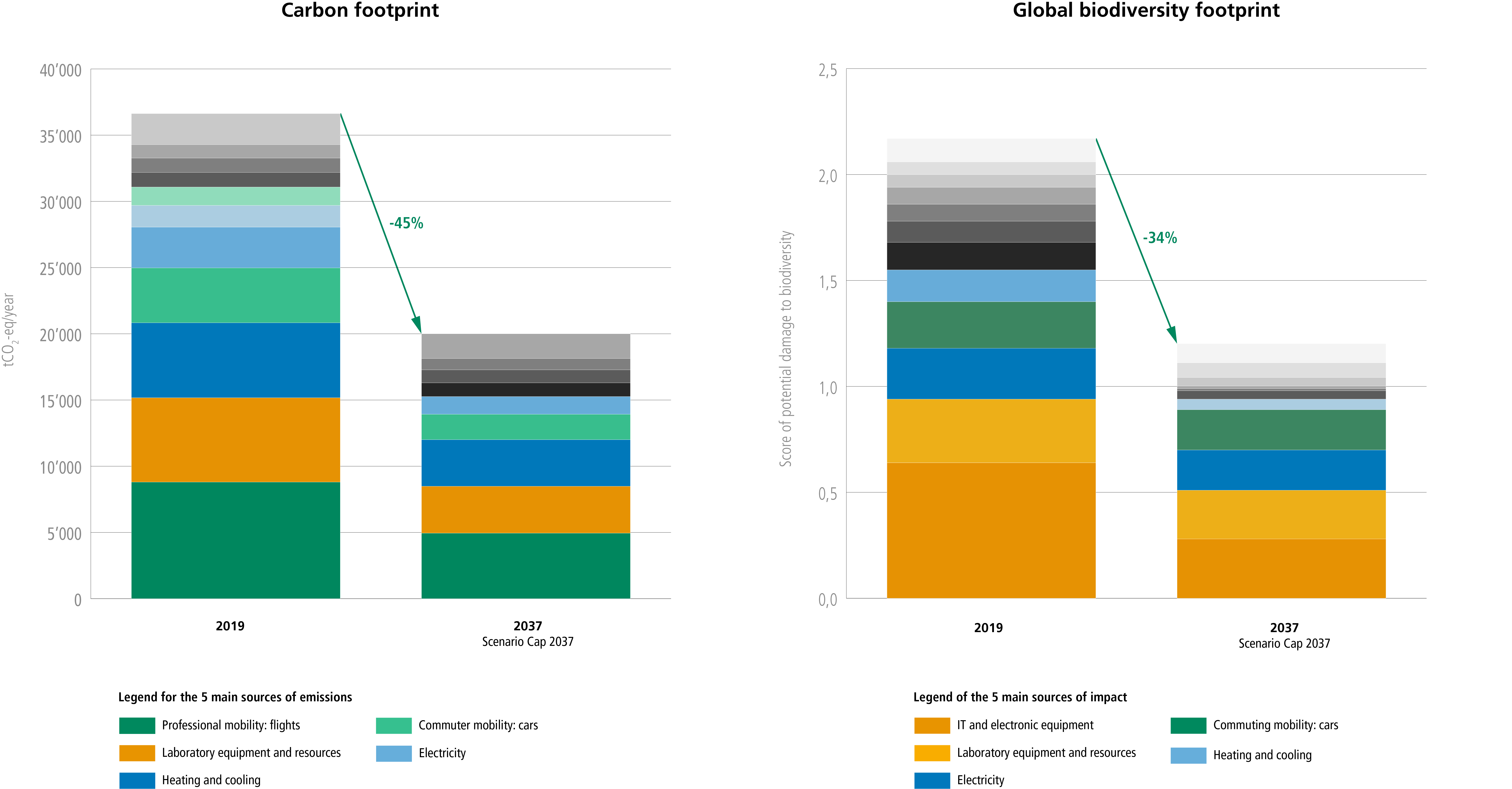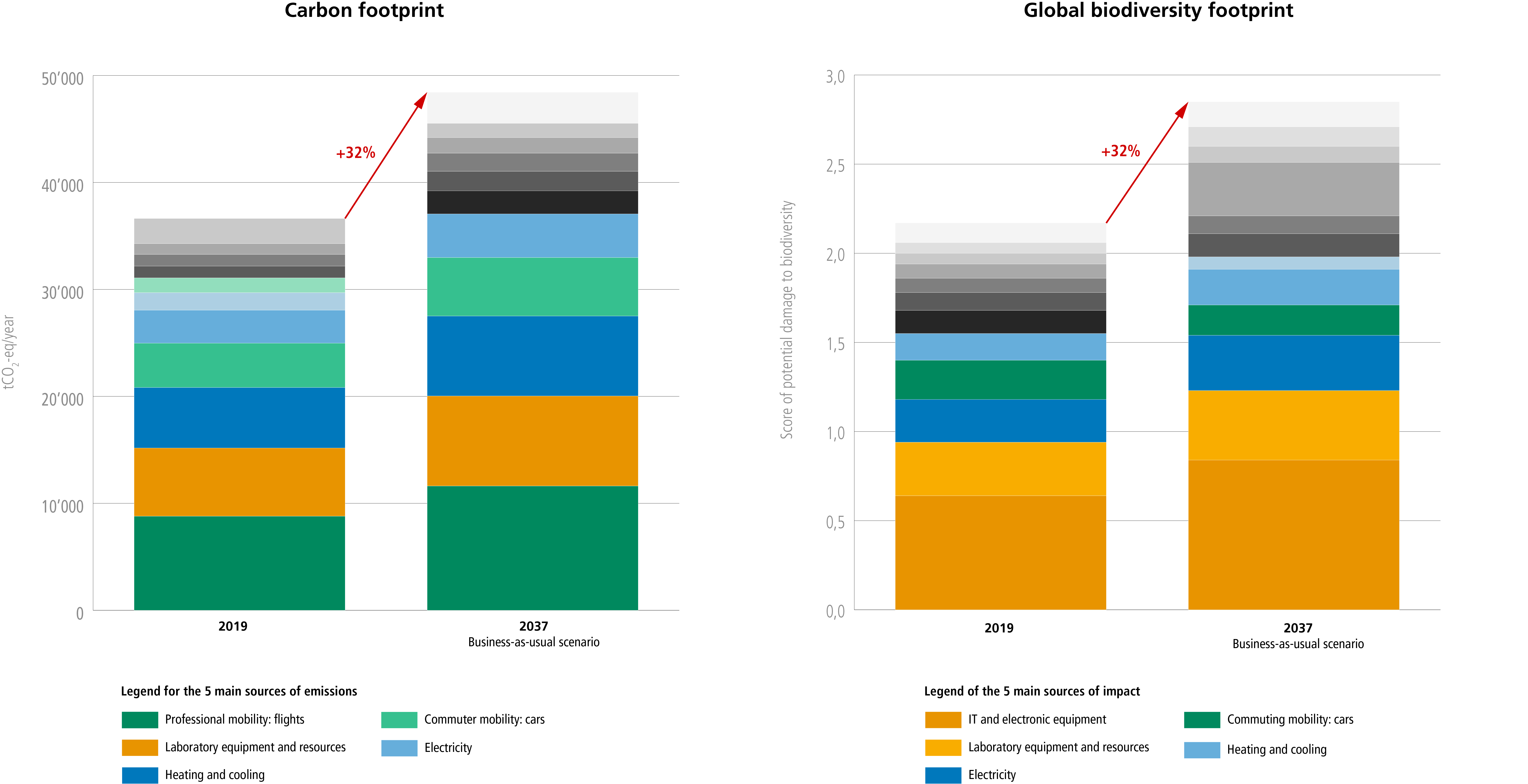The CAP2037 transition strategy aims to reduce UNIL’s environmental impact to put the University on a trajectory compatible with the Paris Agreement and planetary boundaries.
If the 20 transition objectives set for 2037 are achieved, it is estimated that UNIL’s carbon footprint will have been reduced by 45% and that of global biodiversity by 34%.

These reductions in impact are considerable, but are not enough to achieve the thresholds set, in particular a reduction in CO2 eq. emissions of 75% by 2037 (cf. Greenhouse gas emissions descent curve).
To go beyond the reductions possible at UNIL, societal changes will be necessary. Several objectives of the CAP2037 strategy aim to stimulate these changes at different levels, in particular through:
- Training, both for the UNIL community and beyond, through continuing education and collaboration with schools.
- Research into sustainability issues and the transformations they imply.
- Collaboration with stakeholders in the field on transition issues.
These interventions at different levels have the potential to accelerate the transition of UNIL and society as a whole.
Business-as-usual scenario
The expected effects of the transition aims are calculated on the basis of a business-as-usual scenario, i.e. a projection of UNIL’s impacts in 2037 that follows the developments of recent years.
This business-as-usual scenario is based on the following assumptions:
- Growth in the university community of 32% between 2019 and 2037, in accordance with the projections of the Arima model (the basis for prediction used by the SFSO to calculate university enrolments since 2000).
- Increase in built area, kilometers travelled for commuting, purchases required for UNIL activities, food served in cafeterias, etc. proportional to the increase in the community.
- No major changes in the behavior of the university community in terms of diet, commuting habits, work-related travel, consumption, etc.
- No major changes in the local, national or international context (e.g. no reduction in the environmental impact of the energy mix).
In accordance with this scenario, the building space requirements not covered by the future buildings planned to date (Biocosme and NBSH) amount to 78,000m2.
The impact associated with the construction of these areas is considered and spread over 30 years. The estimated additional energy consumption for infrastructure and research processes is calculated in proportion to the increase in additional built area.
According to this business-as-usual scenario, it is estimated that UNIL’s carbon footprint will increase by 32% between now and 2037, as will its impact on global biodiversity.

